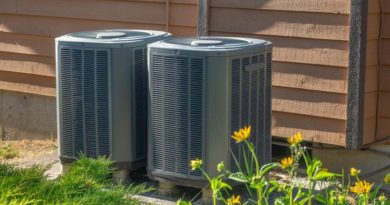Understanding Electric Heat Strips for HVAC Systems: Functions and Applications
As the demand for energy-efficient and versatile heating, ventilation, and air conditioning (HVAC) systems continues to grow, the incorporation of electric heat strips has become increasingly common. Electric heat strips, also known as electric heating elements or electric resistance heaters, offer an effective and reliable solution for heating indoor spaces. This article aims to provide a comprehensive understanding of electric heat strips, including their purpose, operation, and when they are most beneficial in HVAC systems.
What are Electric Heat Strips? Electric heat strips are heating elements that generate heat through electrical resistance. They consist of a series of coiled resistance wires housed within a metal sheath. When an electric current passes through the resistance wires, they convert electrical energy into thermal energy, thus producing heat. Heat strips are typically integrated into the air handling unit of an HVAC system and work in conjunction with other heating methods, such as heat pumps or gas furnaces.
Function and Operation: The primary function of electric heat strips is to supplement or provide a standalone heating source for HVAC systems. They work by warming the air passing through the air handler before it is distributed throughout the building. The heat strips are controlled by a thermostat, which activates them when the desired temperature is not met.
When to Use Electric Heat Strips:
- Cold Climates: Electric heat strips are particularly useful in regions with extremely cold climates. In areas where temperatures regularly drop below freezing, conventional heat pumps may struggle to extract sufficient heat from the outside air. Electric heat strips act as an auxiliary heat source, providing supplemental warmth to ensure comfortable indoor conditions.
- Quick Warm-Up: Electric heat strips excel at delivering rapid heating. They can quickly bring a room up to the desired temperature, making them suitable for spaces that require immediate warmth, such as bathrooms, offices, or guest rooms.
- Zoned Heating: In larger buildings or homes with zoned heating systems, electric heat strips can be installed to provide localized heating in specific areas. This allows for more precise temperature control and eliminates the need to heat the entire building when only a section requires warmth.
- Backup Heating: Electric heat strips serve as reliable backup heaters in case the primary heating system fails. They can ensure that occupants remain comfortable during periods of system maintenance, repair, or temporary malfunctions.
- Low Installation Cost: Compared to other heating alternatives, such as gas furnaces or hydronic heating systems, electric heat strips have lower upfront installation costs. This makes them an economical option for heating smaller spaces or when retrofitting an existing HVAC system.
Energy Efficiency Considerations: While electric heat strips are effective at generating heat, it is important to note that they are not the most energy-efficient heating option. Electric resistance heating is known for its high energy consumption and associated costs. Therefore, it is recommended to use electric heat strips judiciously and consider other energy-efficient alternatives, such as heat pumps or geothermal systems, where possible.
Electric heat strips play a valuable role in HVAC systems, providing supplemental or standalone heating capabilities for various applications. They are particularly beneficial in cold climates, for quick warm-up needs, zoned heating, and as backup heat sources. However, their relatively higher energy consumption should be considered when evaluating their long-term cost effectiveness. By understanding the functions and applications of electric heat strips, HVAC system designers and homeowners can make informed decisions to achieve optimal comfort and energy efficiency.


